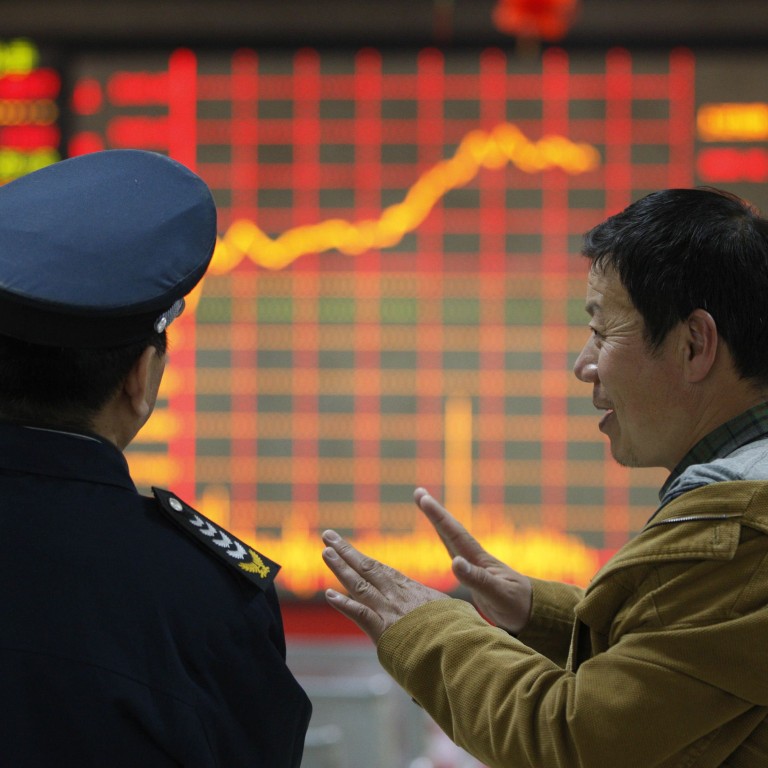
Analysis | Long yield holds the key in latest market rebound
Bruce Lee once described his martial arts philosophy as “water”. “Empty your mind.” He said, “Be formless, shapeless, like water.” In a market where moves are exaggerated, memory is short and rotation is a quick fad, Bruce Lee’s philosophy is a perfect strategy.
As the US sell-off intensified in the past few days, something rather strange happened - China pulled off a strong performance amid surging global volatility. Meanwhile, gold stayed above 1300, while iron ore and copper’s rebound continued. Emerging markets outperformed, too. Yet small caps such as Russell 2000, TSE Mothers Index, ChiNext and HSSI were under severe pressure. Apparently, the momentum trades of 2013 are reversing, and money is finding its way into last year’s laggards.
Consensus is shifting. It is now believed that the "stimulus" measures China announced last week will spur an economic and hence a market recovery. But if so, why then have small-cap high-beta growth names actually underperformed, and large-cap laggards are leading the charge?
On a closer look, the so-called stimulus contains nothing new: the railway construction programme was already announced earlier this year; total investment into the expanded shanty town reconstruction programme has not changed much, despite an increase in target unit completion; and all in all the fiscal deficit remains flat at 2.1 per cent of GDP. That is, the new stimulus is largely just talks.
That said, it should be noted that emerging markets' relative performance has fallen to the level in late October 2008 - the depth of the global financial crisis. China and Hong Kong’s relative performance is around where it was in early 2005. Meanwhile, Russell 2000 is at its all time high, and ChiNext valuation is 30 per cent higher than NASDAQ during the TMT bubble. Expectations for economic data have plunged to a level not seen since the fourth quarter of 2008, and thus can only surprise on the upside. The prices of large caps, as well as the prices of last year’s most hated trades, have priced in much of the bad news. Simply put, the market has run out of bearish excuses for now. At these depressed levels, they can rebound for any reason, even for the wrong reasons(Chart 1).
But long bond yield will fall eventually, and with it the prices of risk assets. The market also appears to believe that low short rates bode well for stocks, drawing from the experience during the liquidity crisis last June. This view is also misguided, as long-term interest rate, rather than short-term, is a variable used in asset pricing. Recall that last June both short and long ends spiked higher and crushed the stock market. Since then, short rates have fallen, but the long end has refused to budge.I believe that long yields will come down sooner or later. If the economy continues to slow down while inflation remains tamed, bonds should outperform. If RRR is cut as hoped, then it will be a tacit acknowledgement that the slowdown is more severe than feared, and will spur a rotation into bonds instead of stocks.
The fact that long yields have not yet fallen shows that the market is still uncertain about the outlook of interest rates. Yet the PBoC's move of lowering its repo rates, coupled with a continuing slowdown, should be enough reason for long yields to fall. Of course, with many bonds and fiscal payments coming due in April, bonds will not be in short supply. And the upcoming economic release augurs ill for yields. As such, long yield will likely linger around its highs – for now.
Beyond the immediate term, however, long yields will fall. Our research shows that the correlation between bond yield and risk asset prices such as ChiNext, properties and the internet sector is tight (Chart 2). When growth slows and yields fall, it cannot be good for risk assets. Long yield is close to its historical highs. If from these levels it rises further instead of falling, it will then significantly raise financing costs for investment in the real economy. That is, at its current level, long yield will eventually become a headwind for the market, no matter it rises or falls. Anecdotal evidence suggests that the recovery in iron ore and copper prices is indeed helped by longs borrowing even more money to pile on their positions. This buildup in long positions also coincides with a rise in raw material inventory shown by the PMI. Capacity utilisation in steel mills has also run up, rendering some support to iron ore. Yet all these can end quite badly if the stimulus is seen in the right light.
Meanwhile, Chinese internet giant Tencent’s price-earnings ratio, a valuation anchor for the entire internet sector, had peaked at around 60. If so, the correction in small-cap/high-beta names will have further to go. That said, long yield still needs some time to break down, and the false hope for stimulus is alive and well. Such recalibration of market expectations will allow equities to extend its technical reprieve a little longer. As such, traders should continue to buy beaten-down emerging market, large caps, industrial commodities – till the next rotation. Just remember that ‘water can flow, or it can crush’.
The author is managing director for research at Bank of Communications. Follow him on Sina Weibo.
